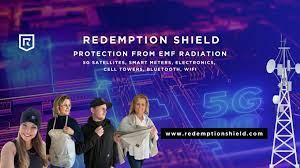
Navigating the Controversy: Understanding Electromagnetic Hypersensitivity
In an era dominated by wireless technologies, the phenomenon of Electromagnetic Hypersensitivity (EHS) has emerged as a topic of intense debate and controversy. Individuals claiming to suffer from EHS report experiencing a range of symptoms, such as headaches, fatigue, and nausea, which they attribute to exposure to electromagnetic fields (EMFs) emitted by modern devices. As the debate surrounding EHS continues to grow, it is crucial to explore the scientific evidence, societal implications, and potential solutions to address the concerns of those who believe they are affected.
Defining Electromagnetic Hypersensitivity:
Electromagnetic Hypersensitivity, also known as “electrosensitivity” or “microwave syndrome,” is a term used to describe a condition in which individuals claim to experience adverse health effects in response to exposure to electromagnetic fields. Sources of EMFs include wireless communication devices, Wi-Fi routers, cell towers, and electrical appliances. While these claims are often dismissed by mainstream scientific communities, proponents argue that the symptoms are real and debilitating Electromagnetic Hypersensitive.
Scientific Perspectives:
The scientific community remains divided on the existence and legitimacy of Electromagnetic Hypersensitivity. Numerous studies have been conducted to investigate the relationship between EMFs and reported symptoms, but findings have been inconclusive. The World Health Organization (WHO) has classified EMFs as “possibly carcinogenic,” but this classification is related to the potential risk of cancer and does not specifically address EHS.
Proponents of EHS argue that the lack of definitive scientific evidence does not invalidate their experiences. They emphasize the need for more research that considers individual differences and the cumulative effects of long-term exposure to low-level EMFs. Skeptics, on the other hand, assert that the symptoms associated with EHS may be psychosomatic, influenced by a nocebo effect, where negative expectations contribute to the experience of symptoms.
Societal Implications:
The controversy surrounding Electromagnetic Hypersensitivity has implications for individuals, businesses, and policymakers. Individuals who believe they suffer from EHS may face challenges in their daily lives, from difficulty finding employment in technology-rich environments to seeking accommodation in public spaces. Businesses may need to navigate concerns about the potential health impacts of their products, and policymakers must weigh the interests of various stakeholders in developing regulations related to EMF exposure.
Addressing Electromagnetic Hypersensitivity:
Finding common ground in the EHS debate involves a multidisciplinary approach. This includes further scientific research to better understand the potential mechanisms behind reported symptoms, as well as the development of guidelines and regulations that balance the benefits of technology with potential health risks. In the meantime, individuals concerned about EMF exposure can take practical steps, such as minimizing device use, using wired connections, and creating EMF-free zones in their homes.
Conclusion:
The debate over Electromagnetic Hypersensitivity underscores the challenges of navigating the intersection between technology and health. While the scientific community grapples with the complexities of this issue, it is essential to approach the concerns of those who claim to suffer from EHS with empathy and an open mind. Balancing technological advancements with public health considerations requires ongoing research, dialogue, and a commitment to understanding the intricacies of electromagnetic fields and their potential impact on human health.


